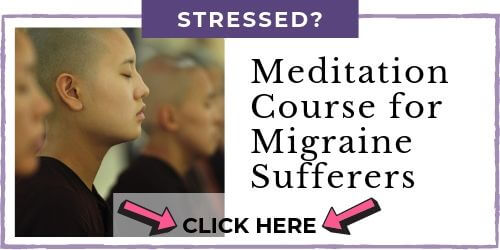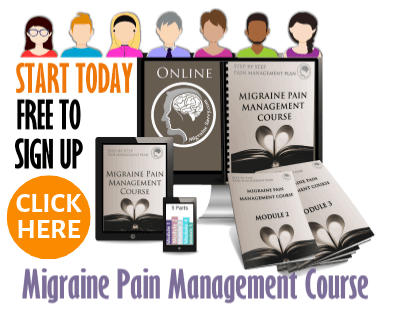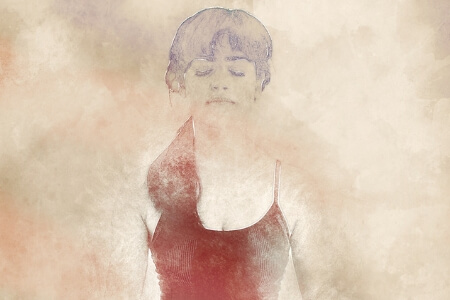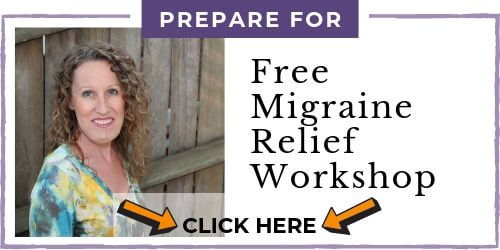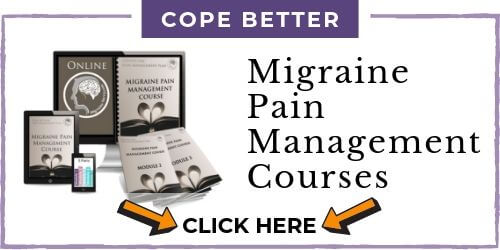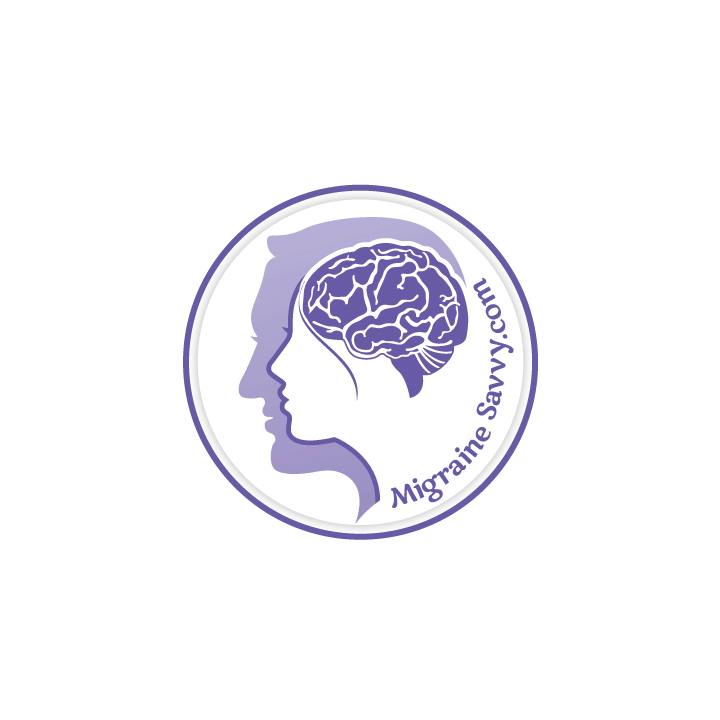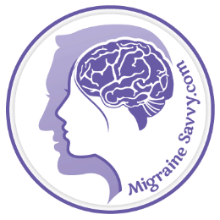- Home
- Meditation
- Meditation for Pain Relief
COMPLETE MAGNESIUM SUPPORT
My Top Choice - Magnesium Breakthrough - The ONLY supplement with all 7 essential magnesium types in one formula. Most only have 1-2 types, leaving you deficient.
Free Meditation for Pain Relief Lessons
 Here's a meditation for pain relief to use for comfort before, during, or after a nasty migraine attack @migrainesavvy
Here's a meditation for pain relief to use for comfort before, during, or after a nasty migraine attack @migrainesavvy
I use Herbert Benson’s relaxation response as a meditation for pain relief. I think his method is similar to transcendental meditation. Learn how to adapt it to be used with migraines here in just a few easy steps.
Whether you choose to start a regular practice or just meditate before a migraine is up to you.
There have been several studies done now that show meditation reduces migraine attack rate of recurrence and severity.
So there appears to be specific benefits for us migraine sufferers from having a regular practice or just doing a meditation before a migraine attack starts.
I'm talking pain relief.
My #1 Choice in Magnesium Supplements
Meditation for Pain Relief – The Basics
According to Dr. Herbert Benson, my hero, there are a few steps to consider before meditating and then there are some simple steps to follow.
Fundamentally your free meditation for pain relief lessons require you to silently repeat a mantra for 20 minutes. When
we adapt this to migraine pain, the actual pain becomes the focus.
Make Sure You Have a Warm, Calm and Quiet Environment
It is best if you can choose a room or space that is warm and quiet with no distractions. For us migraineurs our dark bedroom is best. Obviously this is not always possible, like if you are at work for example.
But try to find the best place where you can calm yourself and your mind easily. This will make focusing on your physical sensations and or repeating your word or phrase easier.
Choose Your Focus – a Sound, a Word, an Object or a Phrase
Choosing a sound or a word like one, or peace for example, or a phrase will keep your mind from “wandering.”
You can repeat it out loud or silently.
Dr. Benson in his book The Relaxation Response tells us to use a constant stimulus to shift our mind from “logical, externally oriented thought” to internal awareness.
You
can also gaze at a fixed object like a candle flame which is quite
popular. However, this is not recommended for pre-migraine but its your
choice, and I want to provide you with options. I like options.
Focusing on just one thing is essential.
If you can bear it,
you will also be using your pain as a focal point. The idea is to
attempt to observe the pain from a distance.
Some say it is
best to choose a word that is meaningless to you so that it does not
stimulate your mind to have unnecessary thoughts. The word “one” is
very useful for this purpose.
- Closed eyes for repetition
- Open eyes for gazing at your object
Always Start With Taking a Minute to Bring Awareness to Your Breath
Pay attention to your breath, following your normal rhythm is
important. Breathe only through your nose. You will be saying your
word on your exhale. You might find that once you pay attention to your
breath your body will already start to relax.
Never force your breath. Don’t hold it in, and don’t force it out. Allow a natural rhythm.
Don’t Worry Be Happy Now
If you find that your mind is very busy don’t worry. Disregard your
thoughts and come back to your word, phrase, or sound. Keep it simple,
and just allow the thoughts to be there but repeat your mantra. “You
should not worry about how well you are performing the technique” this
might interfere with your meditation. There is no right or wrong way.
And of course, the intensity of your pain may dictate if you can continue to remain a passive neutral observer, or not.
Distractions Will Occur
The mind creates thoughts - that’s what its function is. If your
thoughts intrude, just return to your breath and your mantra. When I
say mantra, I mean the word, sound or phrase that you have chosen. So
return to repeating your mantra, and let go of paying attention to the
thoughts. Thoughts are expected, so just allow them.
Your
pain will be distracting too. Physical and emotional pain around these
dreadful migraines will intrude. Expect distractions.
Find a Comfortable Position
If you are practicing your meditation for pain relief in bed, then just make sure you are comfortable. Your head should be supported, and a cool cloth on your forehead, an ice pack on your neck and preferably a hot water bottle on your hands, should ease the pain.
If
you are not in bed, then finding a comfortable sitting posture is very
important to endure the whole 20 minutes of meditation required. Some
people sit with crossed legs or kneel. You can sit in a chair as long
as you can relax your muscle groups, and your spine is straight.
Some
individuals lay down to meditate and this often leads to falling
asleep. In our case, lying down and falling asleep is completely
acceptable and actually desirable in order to help the migraine pass.
A Meditation for Pain Relief
Here is my translation of Dr. Herbert Benson’s six steps to "elicit the
relaxation response" aka our free meditation
for pain relief lessons abridged for migraines of course:
1. Lie down or if you can’t lie down, sit in a comfortable position and quieten down.
2. Close your eyes and breathe in.
3.
Bring your attention to your body parts and slowly relax all your
muscles. Begin at your feet, ankles, calves, thighs, buttocks, abdomen,
chest, ribs, spine, the whole torso, shoulders, neck, arms and hands,
head and face. Roll your shoulders, head and neck gently if that feels
right. Wiggle your toes.
Allow everything to relax. Feel
the tension leaving your head and flowing towards your feet. You can
say to yourself, "all the tension is now leaving my body out through my
feet."
4. Become aware of your breath. Breathe only through
your nose. As you exhale say your word silently to yourself, or out
loud. I prefer silently, so I will instruct that. It’s your choice.
For my migraine yesterday I choose the word freedom. I soon discovered
that using the word freedom did not work as well as Om for me. So make
sure you find a word that feels right.
So to begin:
- take a nice deep breath and
- as you exhale say “Om” silently;
- allow the inhale, and as you exhale again say “Om" again.
Using the phrase "migraine free" or "pain free" is not allowed. It is believed that your mind will fixate on that label and reinforce the images you already associate with those words. You can only hold the intention of releasing the migraine.
Following the Flow of Pain Sensations
5. Should you wish to focus on the pain, if it is not too intense, just try to observe it from a distance. Do not label it as pain - but try using the words flow or sensation. Map the size of the sensation, the exact location in your body, give it a color, a shape and a texture. And then start again.
By
repeating the process you should be able to feel the changes in your
pain. The pain may increase, come to a peak and then hopefully
disperse. Leaving you migraine free. I did a repetitive meditation like this for over ten years and I could
meditate the pain away in many attacks. You may need to do this several
times a day, if the migraine returns, like mine did and do.
6.
Continue to repeat your word on the exhale for 20 minutes. You may
open your eyes if you need to check the time, however an alarm is not
recommended. Your body will eventually learn to know when 20 minutes is
up. It has its own internal clock. It is good to just let yourself
fall asleep before a migraine.
For a regular practice it is
best to just sit when you are finished and avoid rushing back to the
tasks of daily life. Either way, it is recommended to sit just for a
few minutes and allow your eyes to open and close until you are ready to
stand up.
7. It is important that you just allow the
process. There is no wrong and no right way to allow the process or
meditate. Be gentle with yourself and your busy mind and what it tells
you when your pain levels increase. If you can, “maintaining a passive
attitude” is important to the success of your practice.
The Benefits Accumulate
The body should not take long to learn this relaxation process with
regular practice. The rules change a little for migraines but the
benefits will accumulate if you stick with it. It is recommended to
practice twice every day, once before breakfast and before dinner is
best. Do not meditate for two hours after a meal as your digestive
function may interfere with the meditation.
Be Proactive With Your Migraines
This is one of the best ways you can be proactive with reducing the frequency and severity of your migraine attacks. Dr. Herbert Benson sure did millions of us a favor by studying TM for over 40 years and he provides us with the very basics of learning meditation for pain relief.
Here's my meditation course for migraine relief and prevention. You can experiment with a variety of techniques:
- Guided Meditations
- Mindfulness Meditations
- Energetic Healings
- Hypnosis
WANT MORE TIPS? Subscribe to my newsletter and follow along on Facebook and Pinterest for all of the latest updates.
MIGRAINE MEDITATIONS Related Articles
How to be more MIGRAINE SAVVY right now...
Book for Free Meditation for Pain Relief Lessons: Benson, H. M.D. (1975) The Relaxation Response. HarperCollins Publishers: NY. P. 162-163 [Online], Available at: http://www.relaxationresponse.org/steps/

